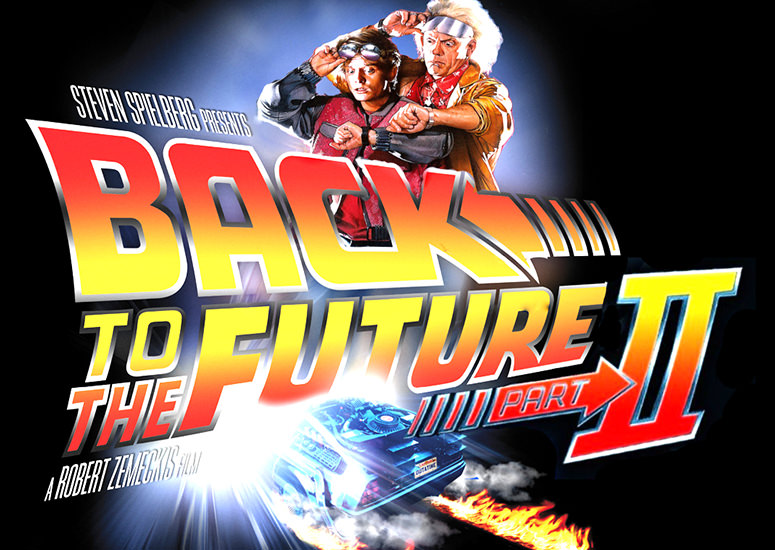October 21, 2015, is the date Marty McFly travels to in Back to the Future Part II. He encounters a number of different technologies that were strange to his 1985 brain, but are common to us . . . 30 years later. The movie’s creators made a lot of predictions about the future of technology and they came amazingly close in a number of cases.
In honor of the movie’s 30th anniversary, here’s a look at some of those predictions that have come true.
Voice-command television. When Marty’s son arrives home in the future, he walks into the living room and tells the TV to open a number of different channels for him to watch. Anyone familiar with Kinect for Xbox knows Marty’s experience is almost exactly like what’s possible now. Voice-controlled remotes also provide similar capabilities.
Alternate payment systems. At a number of points in the movie, modern Marty, old Marty, and old Biff are asked to donate, pay for something, or send someone money. There are numerous application program interfaces (APIs) that connect with major payment providers that make these sorts of payments possible, including card reader devices that connect with tablets and mobile devices.
Forms of payment are changing, too, as smartphones become the new wallet, allowing customers to pay via app. And then there’s bitcoin, a new currency with no banks. It’s like having a digital wallet where you can pay for goods, send/receive bitcoins to other users, and save. More businesses are accepting them, as it’s another way for the business to avoid getting whacked with credit card fees. It’s easy to wonder if, in another 30 years, paper money will cease to exist.
Virtual servers. We may not have Max Headroom–like servers at restaurants (we can hope!), but with tablets and other mobile devices, many restaurants are automating order taking by giving guests touchscreen devices and interfaces they can use to place their own orders and process payments. These virtual servers work hand-in-hand with alternate payment systems to create a comfortable, customer-controlled dining experience.
Holograms. The giant animated shark that tries to eat Marty isn’t a reality yet, but with the recently announced Microsoft HoloLens, that sort of movie promotion may not be far off. They’ll fill your environment with impressive visuals, but don’t have scrolling LED lights like in the movie.
Wearable devices. The bulky, high-tech glasses used by both young McFlys of the future look a bit awkward and silly, but the idea is spot on. Wearables are generally regarded as the next big tech trend, with more consumers wanting access to their data. Devices allow you to monitor health and activity levels, as a means to track and achieve fitness goals, or keep you in touch with email previews and calendar reminders (or a device that happens to do both).
While devices that fit on the wrist are the most common form of wearable tech, shoes, necklaces, rings, glasses, and clothing are all areas getting a high-tech makeover.
Smart homes. When young Jennifer is carried into her older self’s home, the lights turn on when she says, “Lights on.” Similarly, when old Marty walks in, the home’s computer greets him as “the king of the castle” and other funny terms. These clues and a few others, such as the voice-commanded fresh fruit and vegetable garden in the kitchen, seem to indicate that at least some of the family’s home is smart and responds to voice commands.
While not every home these days is as wired as the McFlys’, there are some smart homes and offices, with more household objects joining the Internet of Things every day. A lot of thought, money, and effort is going into developing cool technology for the house of the future and beyond. As time passes, these products, software, and other technologies will make our buildings even more advanced than the McFlys’ home.
And while we don’t have all of the technology predicted in the movie, we’re well on our way to a future filled with fantastic inventions and advances. Ultimately, the future’s not a bad place to live.
used with permission from Microsoft at Work













